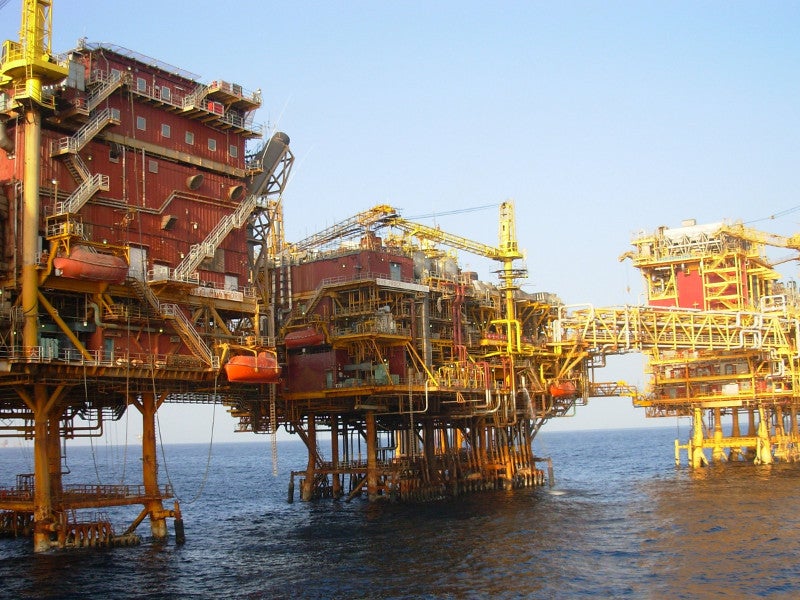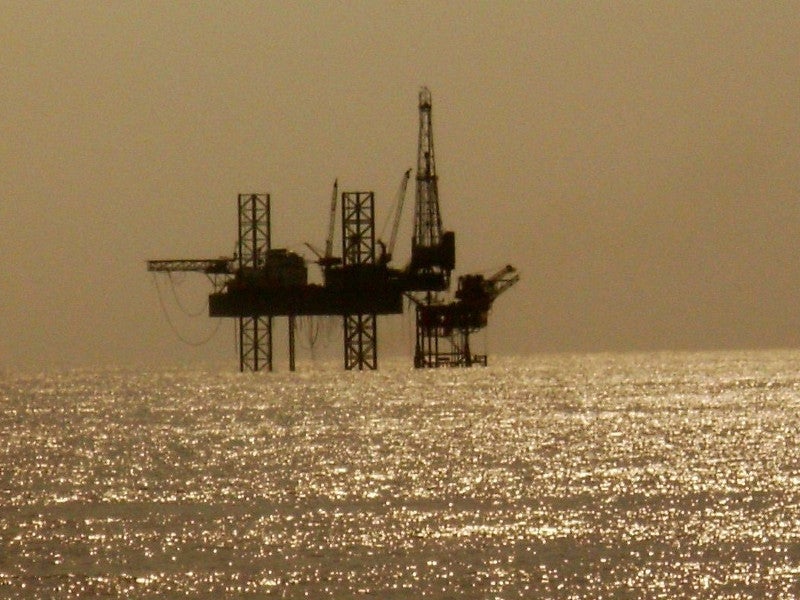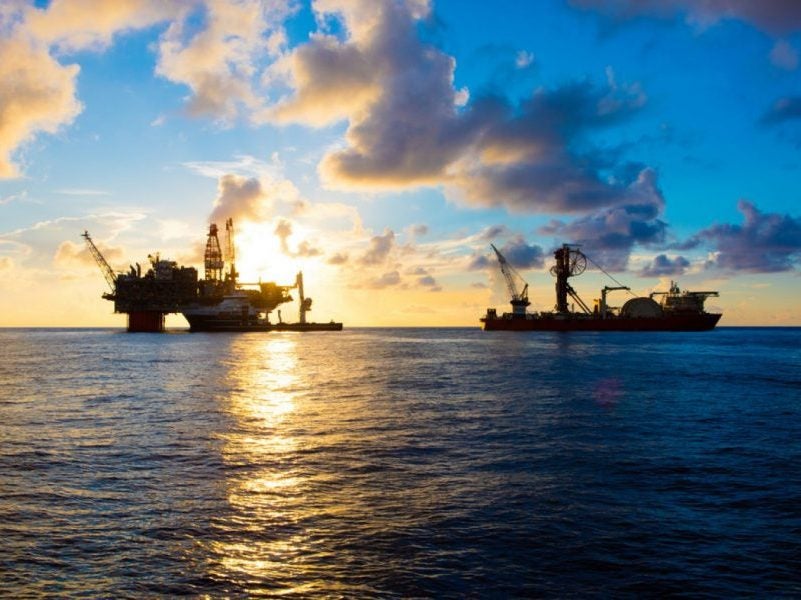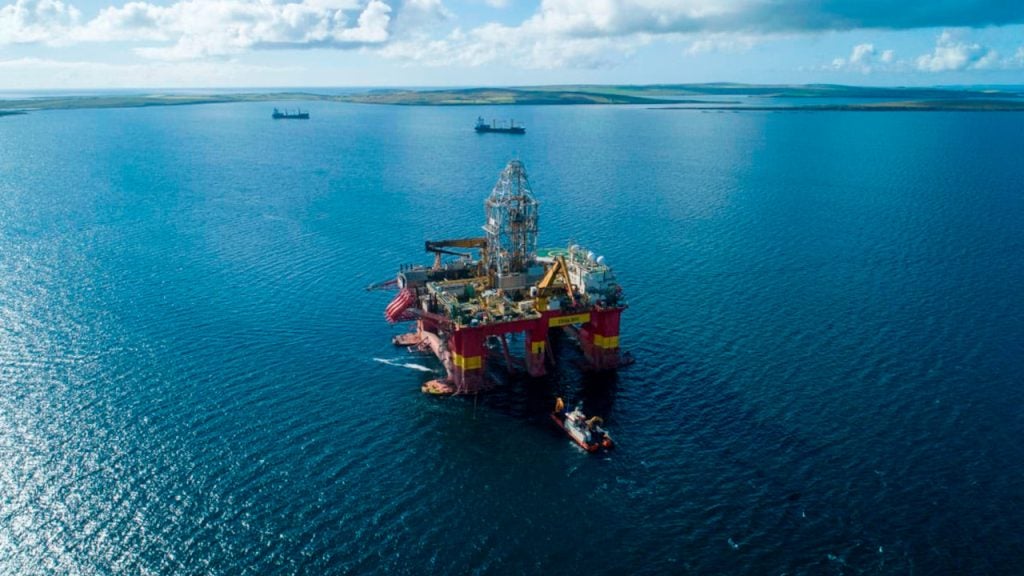Bombay High (now Mumbai High) field is an offshore oilfield located in the Arabian Sea, approximately 160km west of the Mumbai coast, India. Discovered in 1974, the field commenced production in 1976 and is operated by the Oil and Natural Gas Corporation (ONGC).
The oil field consists of two blocks named Mumbai High North (MHN) and Mumbai High South (MHS). The blocks were divided based on shale barrier, assisting in independent exploitation of reserves at both sites.
Mumbai High field currently holds 1,659 million metric tonnes (MMt) of oil and is producing approximately 12MMt a year.
ONGC’s board granted approval for the second phase of MHN Redevelopment project in January 2009, followed by the third phase in June 2014.
Mumbai High field discovery details
Mumbai High field was discovered in February 1974 by the Russian and Indian team from seismic exploration vessel Academic Arkhangelsky while mapping the Gulf of Cambay between 1964 and 1967.
The discovery of Mumbai High field and subsequent other discoveries of other oil and gas fields in the western offshore area has changed the oil industry in India.
In 2018, a major oil discovery was made from well WO-24-3, which indicated a potential of approximately 29.74 million metric tonnes of oil equivalent (MMtoe) in the area.
Geology and oil reserves at Mumbai High field
Different oil and gas reservoirs, such as L-I, L-II, L-III, L-IV, L-V, basal clastics and fractured basement from top to bottom, are present in Mumbai High field. L-II and LIII are primarily limestone oil reservoirs dating from the Miocene age, further classified into several layers.
Mumbai High field has approximately 1,659Mt of total reserves in place.
Mumbai High field development details
ONGC announced its plan for the redevelopment of Mumbai High field in 2000. It planned to spend approximately Rs90bn ($200m) in five years for the project. The plan was divided into two phases. The first phase started in 2000 and was completed in December 2006.
Phase one is expected to yield an additional crude oil production capability of 23.25MMt and 6.10 billion cubic metres (bcm) of gas by 2030 from 73 new wells and ten sidetrack wells.
The cumulative oil production from phase one redevelopment wells was 9.34MMt and cumulative gas production was 2.89bcm until March 2008.
Mumbai High field reached its peak production rate of 400,000 barrels of oil per day (bopd) in 1985 and continued at the same rate until 1989.
A decline in oil and gas production led to the need for a redevelopment plan. Production declined gradually, sinking to 220,000bopd and ten million metric standard cubic metres of gas per day (Mmscmd) in 2001.
ONGC invested approximately Rs80bn ($178.4m) during phase one for better efficiency and controlling the decline in oil and gas production. During phase one, 29% of the 1,659MMt of total reserves were improved.
Mumbai High North phase two redevelopment details
Phase two redevelopment, announced in 2009, will result in additional crude oil production of 17.354MMt and 2.987bcm of natural gas, totalling to 20.34MMt of oil equivalent by March 2030.
Phase two of the MHN redevelopment plan aimed to further enhance the recovery rate from Mumbai High field by drilling 73 new wells and sidetracking 38 poor producers. Small reservoirs such as L-II and L-I were combined with major reservoir L-III to strengthen its oil production and development programme. Phase two was estimated to cost approximately Rs71.33bn ($153.43m).
Mumbai High North phase three redevelopment details
ONGC approved phase three of redevelopment for MHN in June 2014. Phase three redevelopment is expected to add 6.997MMt of crude oil and 5.253bcm of gas capabilities by 2030.
It will involve the installation of five wellhead platforms, modifications at 13 platforms, one clamp-off facility for wells at an existing platform and the construction of associated pipelines. It will also involve the drilling of 52 new wells and 24 sidetrack wells.
A contract for phase three of the redevelopment was awarded to L&T in September 2014. Phase three redevelopment is expected to cost approximately Rs58.13bn ($955m).
Mumbai High South phase three redevelopment details
MHS phase three redevelopment is also in progress with an estimated investment of Rs60.68bn ($855.77m). SapuraKencana Petroleum subsidiary Kencana HL was awarded a $273m contract for the same work in July 2015. It subcontracted OHCS India and Param Offshore Services for topside hook-up, modification and the pre-commissioning of nine wellheads and a process platform.
The project will increase production by 7.547MMt of oil and 3.864bcm of gas till 2030. The redevelopment project involves the drilling of 70 new wells.
Mumbai High field infrastructure details
ONGC began construction of the new process complex for MHN near the old Bombay High North (BHN) platform in 2007. The platform was completely destroyed in a major fire in July 2005, which affected oil production. Along with the field’s redevelopment plan, the new MHN complex was also developed to have a handling capability of approximately 270,000 barrels of liquid and 6.9Mmscdm of compressed gas, as well as an oil pumping capacity of 50,000 barrels a day.
The MHN process complex consists of a process-cum-riser platform, living quarters, a subsea-connected flare structure, subsea pipelines and adjoining topside modifications, such as facilities for handling sour gas from B series marginal fields. The new MHN complex ensures optimised and safe operations at the field.
L&T secured a $1.18bn contract from ONGC during August 2009. The contract included an order for the MHN processing platform and living quarter projects, along with additional order for the supply of three process gas compression modules, also to be installed in MHN complex. The three compression modules constitute a total of 80,000t of structures. The work included surveying, engineering, procurement, fabrication, installation and commissioning of the facilities by L&T.
The new MHN process platforms organise the gas lift pipelines and oil exports lines of MHN field. The former BHN platform was replaced with a new MHN process platform that created additional facilities for gas processing from future platforms.
To facilitate the interconnectivity of the power generating system, high-voltage submarine composite electrical cable was installed in 2007. The installation was completed in 2012.
The installation involved laying submarine electrical cable to interconnect 26 wellhead platforms, electrical submersible pumps (ESP), 81 wells and associated surface. The ESP assists in oil production from high-water cut (90-95%) wells in Mumbai High field.
The board of the company approved a proposal for an investment of Rs39.9bn ($101.3m) in the C series development project in 2007. The investment would facilitate MHN to handle additional 3Mmscmd of gas from C series wells.
Pipelines
ONGC approved the construction of seven pipelines with risers and associated top-side facilities in MHN in April 2007. These pipelines are vital for maintaining optimum efficiency from Mumbai High.
Production from Mumbai High Field
Mumbai High Field reached its peak production level in 1998 with 20MMt a year. Along with its adjoining fields, it produced at a rate of 12.8Mmscmd of gas prior to the recent redevelopment projects. The production was approximately 265,000bopd with an average of 63% of water cut and an average production of 1,200 barrel of liquid a well during 2007.
The cumulative production of crude oil, including oil generated as a result of phase one development, was 140.25MMt until January 2009.
The field is operated using the gas lifts method, which is a major artificial lift method used for oil production. Several gas compressors spread over a number of process complexes in the field to support the broad gas lift network.
As of 2018, the average daily crude oil production at Mumbai High field was 16.9MMt and gas production was approximately 52.32Mmscmd.








